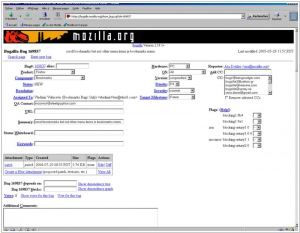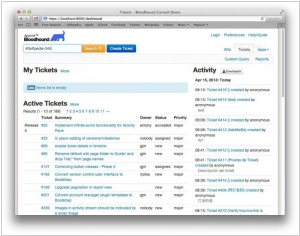Apache Bloodhound vs Bugzilla
May 24, 2023 | Author: Michael Stromann
10

Bugzilla is server software designed to help you manage software development. Bugzilla is a "Defect Tracking System" or "Bug-Tracking System". Defect Tracking Systems allow individual or groups of developers to keep track of outstanding bugs in their product effectively. Most alternative defect-tracking software vendors charge enormous licensing fees. Despite being "free", Bugzilla has many features its expensive counterparts lack. Consequently, Bugzilla has quickly become a favorite of thousands of organizations across the globe.
Apache Bloodhound and Bugzilla are both popular issue tracking systems designed to help teams manage and track software bugs and issues. However, there are key differences between the two. Apache Bloodhound is an open-source platform built on top of Trac, offering a user-friendly interface and integrated project management features. It provides flexible issue tracking, custom workflows, and tight integration with version control systems. Bugzilla, also open-source, is a robust and widely-used bug tracking system that focuses primarily on issue management and collaboration. It offers advanced search capabilities, customizable bug reports, and extensive configuration options. Bugzilla is highly regarded for its scalability and extensive API support.
See also: Top 10 Issue Trackers
See also: Top 10 Issue Trackers
Apache Bloodhound vs Bugzilla in our news:
2011. Bugzilla 4.0 improves duplicate detection, custom fields and search
The latest version of the widely-used bug-tracker, Bugzilla 4.0, has been officially released. Since Bugzilla 3.0, significant redesigns have been implemented across almost every major user interface, resulting in a vastly improved experience. Additionally, the WebServices have undergone significant advancements, and an impressive Extensions system has been introduced, accompanied by numerous other new features. Bugzilla 4.0 introduces more than just enhanced WebService and UI functionality. Exciting additions include automatic duplicate detection, improved custom field capabilities, autocomplete functionality for user inputs, and search enhancements. Furthermore, the update brings forth a new attachment details user interface, general usability improvements, a revamped default status workflow, improved "Last Search" functionality that remembers multiple searches, cross-domain WebServices with JSONP support, mandatory custom fields, the transformation of voting into an extension, automatic provision of new CSS and Javascript to users, an array of new hooks, and a new Apache configuration.



